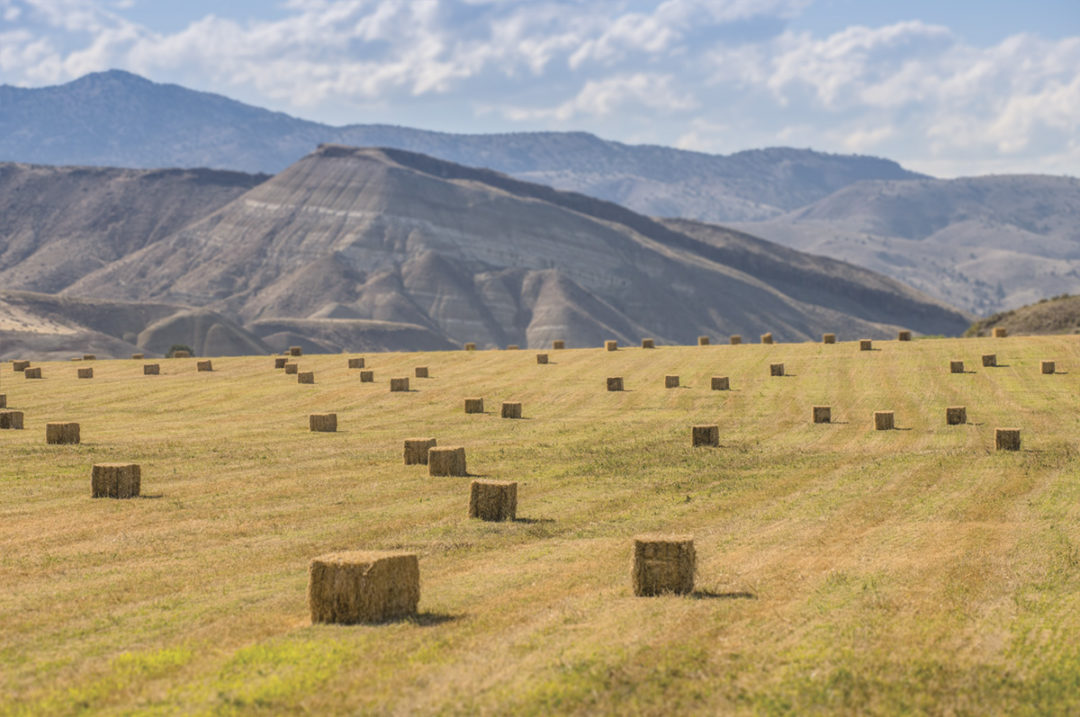Many producers are constantly seeking methods to increase their profits as input costs continue to rise. Rolling hay into dense bales is a proven technique that can greatly reduce expenses for transportation, storage and labor. It also benefits cattle nutrition. By concentrating on improving bale density, producers can significantly enhance their return on investment.
So what is hay bale density?
Hay bale density refers to the weight of hay per unit of volume. Typically, hay bale density is measured in pounds per cubic foot (lbs/ft³) or kilograms per cubic meter (kg/m³). The density of hay bales can vary, depending on factors such as the type of hay, the moisture content and how tightly the bales are packed.
Why is hay bale density important?
Whether you are producing bales for hay or silage, there are multiple reasons why the density of bales is significant. First, the nutritional quality of the hay is impacted by the density of hay bales. If the bales are too dense, there may not be proper air flow, leading to mold and spoilage. Conversely, if the bales are not dense enough, too much air can get in, which can also lead to spoilage.
According to a bale study by Penn State University, denser bales produce more total acid and remain cooler during the fermentation process. Greater bale density also leads to greater acid content, resulting in lower pH and lower sugar content. This increases the whole-bale bunk life of round bales by reducing spoilage, enabling the feeding of larger-diameter bales to the same number and size of cattle without waste. Penn State observed up to 43% more hours of bunk life due to higher bale density.
Secondly, density affects the amount of hay that can be stored in a specific area. If the bales are less dense, more space will be required to store the same amount of hay.
Transporting harvested forage from the field to the storage area is a time-consuming and fuel-consuming process, as is moving hay from storage to the feeding area. The bale size and density directly affect the number of trips and the time it takes to move the hay from the field to a hay lot or barn.
Lastly, dense hay bales weather better with less loss because of their ability to shed precipitation and resist absorbing moisture from the ground.
What are some ways to improve bale and feed quality?
Forage maturity – A Missouri Extension publication by Jimmy C. Henning and Howell N. Wheaton states that the stage of maturity at the time of harvest is one of the most important factors that affect forage quality.
Most forages will have a 20% loss in total digestible nutrients (TDN) and a 40% loss in protein by a delay of only 10 days past the most desirable stage of harvest. For instance, alfalfa-grass mixtures cut when alfalfa is in the late-bud-to-early-bloom stage will often contain 65% TDN and 18% protein. Contrast this to cutting at the half-bloom stage or later, with 48% to 50% TDN and 12% protein. This is a 20% loss in the value of the hay.
Grasses, which are somewhat lower in feed potential than legumes to start with, follow the same decreasing pattern in feeding value as they mature. Grasses such as fescue and orchardgrass will often be as low as 6% crude protein after blooming, when the seeds are beginning to form.
Legume-grass mixtures should be harvested when the legume reaches the desired stage of maturity, regardless of the growth stage of the grass.
Moisture – When baling hay, it’s essential to ensure that the moisture content is not too high. If the hay has too much moisture, it can lead to excessive heat and possibly even combustion. This is because the moisture provides a breeding ground for bacteria and fungi which, when combined with oxygen, can lead to chemical reactions that release heat. If the heat is not managed properly, it can cause the temperature of the hay bale to increase, leading to a risk of combustion. Additionally, even if a fire is avoided, excessive moisture content can cause a significant loss of dry matter, decreasing the overall quality of the hay.
Equipment – To achieve optimal productivity and prevent breakdowns, it is crucial to ensure that your equipment is correctly set up. The first adjustment is to level the baler in conjunction with the drawbar height of the tractor to ensure optimal crop flow and bale shape. Secondly, the pickup height is important to ensure a clean pickup of your crop. Make sure the pickup is adjusted to your stubble length, and the gauge wheels are slightly off the ground so they only lift up the pickup when going over a hump. The pickup, crop guard or crop press and rotor must be positioned closely together to facilitate a smooth transfer of the crop and minimize the risk of clogging. Your owner’s manual should provide guidance on adjusting bale density to different crops and conditions for a properly functioning baler and high-quality feed.
However, don’t assume that once your equipment is set up correctly, you’re good to go. It’s crucial to keep monitoring the bale density in the chamber while operating the equipment and making any necessary adjustments accordingly.
Summary
Choosing denser bales can benefit producers by reducing waste and improving feed-to-gain. Fewer bales to handle means less fuel, less net wrap and less depreciation per year, adding to the money in your pocket in the long term. Furthermore, cattle that consume denser bales receive better nutrition, which can lead to improved health and productivity.
At the end of the day, high-quality forage means a healthy herd and a better bottom line. When looking at bale density, consider these tips recommended to make the most out of each bale.











